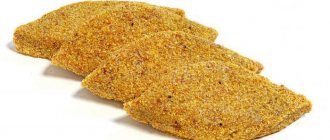Home ► Other interesting articles
I have always been interested in the Carpathian region and the culture of the peoples living in it. Therefore, as soon as I managed to rent a house in a mountain village in the middle of the Lviv region, I immediately began an ethnographic study of the region. One of the first stages of my research was Galician Carpathian cuisine, which was formed under the influence of such neighboring states:
• Poland;
• Hungary;
• Slovakia.
Each of these countries has a distinctive cuisine with thousand-year-old traditions. Having united together, they simply could not help but form an original culinary tradition, which would include the most delicious and practical dishes of the Carpathian peoples.
While visiting restaurants in towns nearby the village, as well as tasting what was offered to me as a guest, I compiled a list of delicious dishes - real pearls of Carpathian cuisine that are definitely worth trying. This article is divided into 4 sections, each of which is a separate review of such dishes.
1. Sponder.
2. Banosh.
3. Bograch.
4. Loci pechene.
Let's start with the veneer.
Sponder
In Lviv there is a store entirely dedicated to this wonderful product, although its prices are intended more for wealthy tourists than for local residents. Which, however, doesn’t stop you from going there, wandering between the counters, feeling the tempting smell tickling your nostrils and tasting a small piece of sponder for free. You can still find this product on the market, but sellers in the Carpathians are not as hospitable as at Odessa Privoz, and therefore will not treat you to sponder for free at every counter.
So what is it? When Galicians or any other residents of western Ukraine talk about shponder, they mean meaty pork undercut, baked in a wood-fired oven or in the oven.
On the map of cutting a pork carcass, the undercuts are located in the peritoneum, number 11 is indicated in the figure:
Figure – Pork carcass cutting map
It is known for certain that the first animal you come across is not suitable for preparing sponder. An ideal undercut suitable for the role of a sponder can only be obtained from a pig that has been fattened on a special diet. This diet allows the animal to form one to three thin layers of fat in the abdominal muscles, separated by layers of meat. Of course, it is not forbidden to use a fattier product, but its taste will deviate greatly from the “canon”.
Read more about how to choose the right pork.
Features of the veneer
The peculiarity of sponder is that it is dietary lard, no matter how paradoxical it may sound. Pork lard contains very healthy fatty acids that are easily digestible by the human body and do not lose their properties even after heat treatment. During long baking, most of the fat leaves the meat and evaporates, and the resulting product is a tasty and slightly dry dietary product.
Also, lard is low in carbohydrates and protein, which is also useful from a dietary point of view, since such a product, even when consumed frequently in small portions, does not allow you to gain weight, but at the same time saturates well due to its high calorie content.
Sponder recipe
In the debate over the correct recipe for making shponder, many forelocks have been torn out and a whole sea of vodka has been spilled. When the author of these lines had the imprudence to ask her neighbor about the recipe, she observed a desperate discussion that ensued between witnesses to the question and people passing by who stopped to say hello.
From all the diversity of opinions and further questioning, we were able to identify the two most common recipes:
• oven baking;
• roasting over a fire.
Let's look at each of these methods in detail.
Baking in the oven
To prepare this dish we need the following ingredients:
• pork chops 1 kg;
• several bulbs;
• 2-3 heads of garlic;
• hot mustard or its seeds, ketchup;
• black pepper and any aromatic seasonings for meat (except cloves).
Important note! The piece of undercut should be of medium thickness and long so that it can be easily rolled into a roll. At the first stage, this piece is generously smeared with garlic from a couple of heads crushed with a garlic press, after which it is set aside and the preparation of the sauce begins.
The sauce is the key component of the sponder, which gives it such a delicious taste and prevents it from drying out too much during baking. For the sauce, you need to add mustard or ketchup (it was they who became the subject of dispute between neighbors), a teaspoon of mustard seeds, spices and coarsely chopped onion (to taste). You can also add a teaspoon of table vinegar so that the marinade soaks the meat more thoroughly.
The resulting marinade is poured over a piece of lard, after which it is rolled into a roll, which is tied with thread. In this form, it should marinate in the refrigerator for at least 2-3 hours, and ideally for a day. The rope must be cotton, since synthetic material will release carcinogenic substances when exposed to temperature.
After marinating, the roll is carefully wrapped in foil and placed in an oven preheated to 180 degrees, where it is baked for 40-60 minutes. The finished product is removed from the oven, cooled and placed in the refrigerator for several hours. The resulting product is served cold.
Roasting over a fire
For roasting over a fire, the same ingredients are used as in the first recipe, with only one difference: there should be enough marinade to cover the product sealed in foil. To prepare sponder according to this recipe, fragrant firewood from coniferous trees is used, which is burned to the state of coals. A barbecue grate with a product on it is placed on a slight elevation from the coals.
It is impossible to say exactly how long the veneer will be baked: half an hour or 40 minutes, it all depends on the condition of the coals and the heat they give. Therefore, after half an hour, it is worth unfolding the foil and piercing the undercut, checking its appearance, the softness of the tissue, as well as the amount and condition of the marinade.
Sponder baked over a fire will turn out drier than baked in the oven (especially if you don’t add marinade), but it will delight the gourmet with the taste and smell of campfire smoke. This product is served both hot and chilled.
How to serve
The product is cut into thin slices and consumed as an independent snack. It is also used to make scrambled eggs (like bacon) or sandwiches. Sponder goes especially well as a snack with strong drinks: vodka, whiskey or strong Carpathian moonshine. Thanks to the meat, which is soaked in fat, intoxication occurs much more slowly, and the stomach is reliably protected from burns by alcohol.
Cold shponder is an excellent addition to the Carpathian dish called “banosh”, but that’s a completely different story.
Benefits of banosh
The main component of the dish is corn grits, which are rich in fiber. It perfectly cleanses the intestines, while preventing the development of putrefactive processes in the body. The selenium it contains protects against stress and slows down aging. Porridge is recommended for children and elderly people, as it contains a large amount of carotene and strengthens the immune system. It also does not cause allergies.
Banosh, the recipe for which is described above, is useful for people suffering from anemia. It contains vitamins E and B12. Pregnant women, who often suffer from a lack of folic acid, simply cannot do without porridge on the menu. It should be the basis of their diet. Banosh also contains magnesium, potassium and phosphorus - microelements that contribute to the normal functioning of the cardiovascular system.
But it is worth noting that with all the advantages of the dish, it also has a number of contraindications. Thus, banosh is very high in calories, so it is not recommended for people prone to obesity and those with high blood cholesterol levels. It is also prohibited for patients with problems with the gastrointestinal tract.
Hutsul banush (banosh) is an everyday dish in the mountainous regions of the Ukrainian Carpathians; 3-4 times a week it is sure to be on the tables of local residents. Once upon a time banosh was considered the food of the poor, but now tourists are treated to this national dish in the best Hutsul restaurants. However, indigenous Carpathian residents claim that Hutsul banush cannot be prepared at home or in restaurant kitchens. True Transcarpathian banosh is cooked only over a fire in large cauldrons, due to which it acquires a unique taste, saturated with the aroma of smoke. What then should those who don’t have a fire and a cauldron do, but would like to try banosh? Step back a little from the Carpathian traditions and still make it in your kitchen. The recipe below with photos will help you cope with this wonderful Ukrainian dish. In addition to corn flour, the list of ingredients must include soft goat or sheep cheese, as well as cracklings - fried lard, preferably cracklings with a slot. Porcini mushrooms are often added, which make the taste even richer. The Hutsul recipe for banush involves the use of corn flour, which is used for baking bread and flatbreads. In urban environments, it can be replaced with the finest grains, which will have virtually no effect on the taste of the finished dish. To give it a characteristic smoky aroma, it is recommended to use smoked lard or bacon for cooking.
Taste Info Second: cereals
Banosh, as part of the Hutsul soul
I first came across this dish in the small town of Turka, in Boykovshchina. Banosh attracted with an attractive photograph and a tasty description, but scared away with its price. When hunger finally drowned out the voice of reason and the cries of my thin wallet, it turned out that this dish was prepared only to order and was not available in the restaurant. Our second meeting with the banosh took place in Uzhgorod, and this time I was ready for it, both financially and culturally-historically.
Banosh, like feta cheese, was allowed to be cooked exclusively by men, because in the Carpathians it is believed that sheep-making and everything connected with it is a man’s business. Also, real rural Hutsuls speak disdainfully of the dish that is served in bars or restaurants or cooked on a home stove: they believe that a real banosh should be cooked over a fire so that “the smoke smells and the fire accumulates.”
Every self-respecting gadza (prosperous Hutsul landowner) should have a place in his yard to prepare banosh. What would it be like without him? After all, in Transcarpathia it is considered no less an everyday food than red borscht in the rest of Ukraine. There are strict canons for preparing this dish, for example, sour cream or cream for it must be three days old, and they must be stored strictly in the cellar so as not to sour. It is forbidden to put fresh sour cream for banosh in the refrigerator under pain of execution, because both the taste and beneficial properties will be “spoiled.” You only need to stir the milk product with a wooden spoon, since a metal spoon will not give the desired taste.
The origin of the dish is described as follows:
• In the Rakhiv region there is a belief that this dish was prepared when there was no food left in the house except sour cream and a handful of cornmeal. Why exactly banosh? Yes, because there was a gadza Banosh in Rakhiv, to whom, in response to dissatisfaction with hunger, the gadzinya said: “eat Banosh, eat Banosh.” This is where the name came from.
However, local historians and ethnologists have a slightly different opinion, believing that the dish came to us from the territory of modern Hungary. But the Hutsuls should not talk about this statement, since there is a risk of offending their feelings to the depths of their souls, of which Banosh is a part.
My ethnographic introduction has taken so long, it’s time to start writing the recipe!
Banosh recipe
For two good servings of banosh, which can quickly satisfy two very hungry people, we will need:
• 1.5 cups (200 grams) corn grits, very finely ground. Even corn flour will do, since it will require less sour cream and the banosh will cook faster.
• 500 grams of low-fat cream or liquid homemade sour cream. Those who do not like sour dishes should take this property of sour cream into account and add cream to their dish.
• Salt (to taste!).
• Shponder - Ukrainian smoked lard or bacon.
• BRYNZA!
If you bought and laid out the above products on the table in front of you, then don’t hesitate and start cooking:
• Sour cream or cream should be poured into a cast iron cauldron or duck pot and brought to a boil. If necessary, dilute with water.
• Pour corn porridge or flour into boiling sour cream in a thin stream (so that it does not clump) and stir with a spoon. Be sure to monitor the thickness of the dish, which should be the consistency of semolina porridge, but not thicker!
• When the porridge is poured in and stirred, it’s time for sponder or bacon, which is cut into thin strips or slices and fried in a frying pan until cracklings are formed. When we repeated the restaurant recipe at home, we also had sheep sausage with us, which we took from some Romanians in Uzhgorod. We fried her too.
• Reduce heat to low and stir the cooking porridge with a wooden spoon until droplets of oil appear on the surface. As soon as they shine, you need to immediately remove the dish from the heat. This step is extremely important because the banosh needs to be thoroughly beaten so that the cream or sour cream turns into melted butter.
• The banosh prepared in this way is poured into deep plates, putting cracklings on top and whittling out a good piece of cheese. Lightly salted cucumbers also go very well with the dish.
The finished product must be consumed hot and always very hungry! After the third spoon, you will feel tired and satisfied with the life of Gadza, who has lunch at home after a working day.
How to cook banosh in Transcarpathian style?
So, let's start cooking, we guarantee that you will be pleasantly surprised at how simply and quickly this culinary masterpiece is prepared:
- Heat 50–80 ml of water in a cauldron and let it boil. Add sour cream and milk, mix thoroughly, but do not bring to a boil. It is enough to heat the mixture to 80 degrees.
Pour the cereal into the cauldron and add salt. Don't forget to stir the mixture constantly. The cauldron should be on medium heat.
When you see that the cereal is moving away from the walls, it means your banosh is ready! Pour the cereal onto a plate and place chopped cheese on top!
Banosh goes very well with cracklings, salted or soaked mushrooms, and herbs. If you want to simplify the cooking process, you can find a recipe for banosh in a slow cooker. It's not very different from the original, but it will save you time. However, we recommend that you cook the banosh over a fire; this is the only way you can experience the deep taste of this delicacy.
Hutsul traditions attract ordinary people with their mysteries and secrets. One has only to remember the famous film by Sergei Parajanov “Shadows of Forgotten Ancestors”, as images of the mountain Carpathians, clear springs, birch trembita and forest makos that hide among the trees and lure random travelers into their arms appear in our imagination. It is among this pristine beauty that people live who wear embroidered clothes, raise sheep and, of course, cook in a cauldron the traditional dish for this region - banosh. The smell of a fire certainly gives it a special charm. But if you prepare this dish at home, it will be no less tasty.
Instead of an afterword
In our article we tried to talk about the options for preparing the Hutsul dish banosh. The recipe with photographs will help you understand the preparation of this simple dish. Corn porridge is a very nutritious and high-calorie dish that satisfies hunger well and for a long time. Such food was once prepared by poor people in Transcarpathia from the products that were always at hand. But now the dish is rather considered a local highlight. In every courtyard, the hostess who receives guests who come to the Carpathians certainly prepares such porridge for her guests.
Banosh (banush) is a traditional and very tasty dish of Ukrainian Hutsul cuisine. This is not hominy, polenta, gomi, or simple corn porridge. At first glance, a simple and unpretentious dish represents a whole ritual in preparation.
Firstly, according to the rules, only men can cook banosh. The best option for preparing the most delicious banosh is over a real fire in a cauldron high in the mountains. They say that a banosh should be saturated with smoke and gain fire. Of course, in our conditions this is not available to many people.
Secondly, a delicious banosh is prepared preferably with homemade sour cream, which has been left for 3 days in a cold place. Banosh should be a little sour - this is its highlight. Do not replace homemade sour cream with cream - it will turn out completely different. Sour cream can be diluted quite a bit with milk or water.
Thirdly, banosh is a simply magical dish. According to legend, banosh should be stirred in one direction only with a wooden spoon. An iron spoon will not give the desired taste. Banosh himself will tell you when he is ready. You must stir the dish until droplets of oil appear on the walls of the cauldron or pan, as well as on the surface of the banosh. It is at this moment that the banosh changes dramatically and turns from a sticky and liquid porridge into a smooth, tender deliciousness sliding along the walls, which follows the wooden spoon in the pan, repeating all its movements. At this moment they say that “the banosh is dancing.”
Banosh is often prepared in Hutsul families, since each family consists mainly of 6 or more people. Every day they all have to do everyday hard work: mowing, plowing, hauling hay, chopping wood, herding sheep, picking mushrooms and berries. And all this in the mountains, when your closest neighbor can live 800 meters above you and getting to any point in the village is not so easy.
And banosh is easy and simple to prepare. It is filling, nutritious and delicious. Banosh is served with sheep cheese, cracklings, and sometimes with fried mushrooms. There are many banosh recipes. It may be thicker or more liquid. If you like a more liquid banosh, add less corn grits per suggested amount of liquid. Bon Appetit everyone!
Hutsul banush (banosh) is an everyday dish in the mountainous regions of the Ukrainian Carpathians; 3-4 times a week it is sure to be on the tables of local residents. Once upon a time banosh was considered the food of the poor, but now tourists are treated to this national dish in the best Hutsul restaurants. However, indigenous Carpathian residents claim that Hutsul banush cannot be prepared at home or in restaurant kitchens. True Transcarpathian banosh is cooked only over a fire in large cauldrons, due to which it acquires a unique taste, saturated with the aroma of smoke. What then should those who don’t have a fire and a cauldron do, but would like to try banosh? Step back a little from the Carpathian traditions and still make it in your kitchen. The recipe below with photos will help you cope with this wonderful Ukrainian dish. In addition to corn flour, the list of ingredients must include soft goat or sheep cheese, as well as cracklings - fried lard, preferably cracklings with a slot. Porcini mushrooms are often added, which make the taste even richer. The Hutsul recipe for banush involves the use of corn flour, which is used for baking bread and flatbreads. In urban environments, it can be replaced with the finest grains, which will have virtually no effect on the taste of the finished dish. To give it a characteristic smoky aroma, it is recommended to use smoked lard or bacon for cooking.
Taste Info Second: cereals
Banosh with bacon
To prepare porridge with bacon we will need:
- Corn grits - 0.2 kg.
- Bacon - 100 grams.
- Homemade sour cream (sour cream can be replaced with cream) - 0.5 kg.
- Homemade cheese - 60 grams.
- Salt.
Pour cream or sour cream into a cast iron cauldron and bring to a boil. If desired, you can add a little water. Next, slowly add corn flour and constantly stir the contents of the cauldron until thickened. Remember, real banosh should not be too thick. In the meantime, cut the lard into strips or bacon and fry in a frying pan until cracklings form.
Remove the banosh from the heat the moment shiny droplets of oil appear on the surface. The dish is served hot and sprinkled with pieces of cheese and cracklings on top. Banosh should only be eaten fresh. Porridge goes well with lightly salted cucumbers.
History of the dish
Banosh, polenta, hominy are the names of very similar dishes that are prepared on the basis of corn porridge of different grinds (from the finest to coarse). The differences between the dishes are quite insignificant - cooking time, sauces, fat content, etc. Not only Hutsuls, but also Hungarians consider Banosh their national dish.
An interesting fact is that banosh, like feta cheese itself, has long been prepared only by men, since sheep-making is an exclusively male activity. The Hutsuls say that a dish prepared at home, in a cafe or restaurant has nothing in common with real corn porridge. After all, banosh should be cooked over a fire and smell of smoke. They say that in Transcarpathia every man has a special place in his yard for cooking porridge. This everyday dish is prepared several times a week. Be that as it may, at home we can also prepare quite tasty porridge, albeit not quite real, but banosh.
Classic banosh
This dish includes all of the above ingredients, the proportions of which are designed for two people. A classic recipe is provided for cooking in cauldrons. According to it, Hutsul banosh is prepared with sour cream from sheep's milk. You can replace this component with cream: it will not spoil the taste, but, on the contrary, will add some zest to the dish.
Let's start with something simple. We dilute the sour cream with a small amount of water or vegetable broth, pour it into a cauldron and bring to a boil. Next, take corn flour: pour it into the cauldron in a small stream, constantly stirring the liquid so that it does not burn. Add salt and pepper to taste. The porridge is considered ready when it has reached a thick consistency and looks like semolina. After this, use a wooden spoon or ladle to place it in deep plates, sprinkle on top with feta cheese, previously finely crumbled, as well as cracklings - small pieces of lard, fried in a frying pan until crusty. You cannot mix the ingredients. The dish should be served hot.











